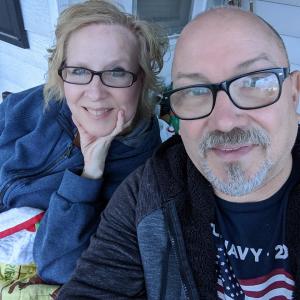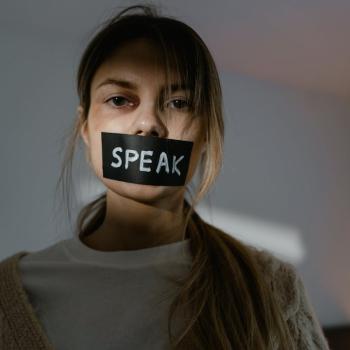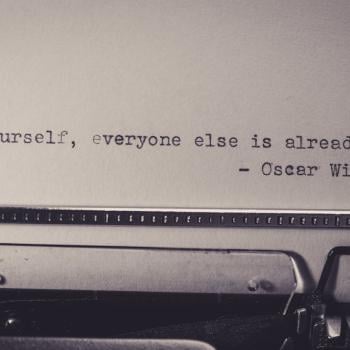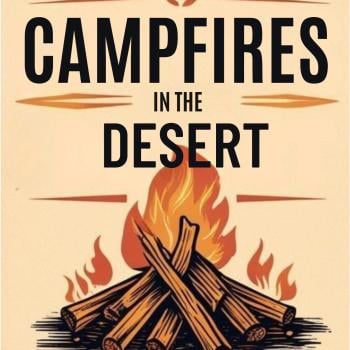
Recently one of my friends shared how she has practiced yoga for 99 days straight. Many people congratulated her, but I didn’t hear anyone that said, “Me too.” Why? Because exercise, getting in shape and creating healthy habits is hard. We take a long walk and our bodies seem to scream out warnings that even a little bit of exercise is way more than we are accustomed to. When I haven’t done yoga, I can feel emotions releasing from my body when I stretch and make space. It’s painful physically and even emotionally to intentionally begin a new practice when we have been negligent.
Everyone knows that, even after a few days, our bodies will begin to adjust to the new routine and become stronger so that we don’t feel as much pain even with more involved practices. Every day, we will be able to walk further or lift more or breath better. But, there’s the pain! It’s always going to be painful first.
We also find pain when we try to address emotional, spiritual and trauma-based issues in our lives. To survive, we often bury our struggles rather than deal with them. At the point of the wounding, we either didn’t know how to deal with them or we didn’t feel like we were able to endure the pain involved with confronting issues. Sometimes even good things we could have done get buried because they seem painful or they don’t fit into our current environment and we avoid doing what we know we could, because the reward seems less than the effort and pain of moving forward.
For many years, I could barely lead a silent prayer without passing out. I flunked a speech in college because I forgot the second half of it and I almost passed out right there in front of the class. I wasn’t even sure what I was afraid of, but it was extremely painful. It was sort of like climbing a mountain with no clothes on. When I was forced to speak, I would finish the endeavor exhausted and wrung out emotionally—it at least felt extremely painful to speak publicly, so I avoided it like the plague until I couldn’t anymore. Coming out of this cycle was extremely painful. My terror of public speaking was rooted deep inside me had created an atrophy that would take years to reverse.
In college, I learned about pleasure and pain. They told me that some of our primary wiring in our brain is that we avoid things we perceive to be painful and seek after things we believe to provide pleasure[1] There is no doubt what we think will bring us pleasure and what we fear will be painful is often skewed. In my experience, it is often deeply distorted. Never-the-less, pain and pleasure are great motivators. We go to unbelievable lengths to avoid and pursue what we think will benefit us. All this makes me thankful for mindfulness in my current practices, because at the least I can hopefully sort through all this confusion a little more effectively.
So, what options do we have to deal with the pain?
The most obvious option and one I’m most familiar with is quitting. I can stop exercising because it is painful hoping I’ll be more motivated later. Maybe there will be a better option or some piece of equipment that is somehow easier. I can withdraw from a relationship because it’s painful to have these discussions. Maybe there’s some secret I haven’t discovered yet. I can quit my job because surely there’s a better company out there. Granted, there are times to quit, but most times quitting only delays the pain until the next situation reminds us, we did not deal with the root issue.
My brothers and I played a lot of organized sports as kids. My parents never made us play anything, but my dad had one simple rule: If you sign up for the team, you cannot quit. He knew that after we got through the initial pain of getting in shape that we would be able to reap all the positive benefits of being on the team. This model would be deeply tested in high school when I experienced two-a-day football practices.
This in no way means that we shouldn’t ever exit a relationship that is abusive or a situation that is producing trauma for us. There are things that we should quit, but we cannot quit everything that is hard. We can’t stop going to counseling because it involves encountering things that are difficult. We can’t keep quitting everything and expect to move forward. We may need to halt a relationship, but then face the pain of restoring our well-being. There is not any gentle slide down to joy and happiness. It’s most always hard, painful work that requires persistence and patience.
The second way we often try to deal with pain is through numbing. I can hear the religious elites warming up the choir. We love to criticize alcohol and drug abuse. There is no doubt that these are issues in society, but there are many ways we anesthetize our pain instead of dealing with it including prescription drugs. People even use religion to numb the pain that they don’t want to face. Spiritual bypassing is when we use religious phrases and practices to bypass encountering things that might be painful. Activities, religion, hobbies, vacations, work, and various vices can all be things that helps us forget about the pain. That’s right, I suggested religion is a vice (at least it can be ). They all promise to take away the pain, but they just mask it for a while and sometimes drive it deeper within us. If we continue to numb the pain, the sure reality is that we will see it again later when it comes out sideways.
I was convinced I could bury the painful rejection I felt at various times in my life. Over the years I continued to numb that pain and try to pretend that it wasn’t there. Occasionally, it would misbehave in various ways. I would blow up for no reason or react in unusual ways to small things. After apologizing, I returned to my life and continued to use the business of my life to numb the pain of rejection. Then, one weekend, it all came rushing out in one of the most bizarre and painful weekends of my life. It almost ended my marriage and certainly derailed my career for some time. Numbing the pain never really reduces or solves the problem of pain. Emotional pain does not get better on its own, so numbing agents only help temporarily and make the problem worse.
The only real way to deal with pain in our life is to lean into it. Just like I had to keep exercising to get in shape, getting in emotional shape often requires facing some things that are painful and stepping into them. Again, this doesn’t mean staying in abusive situations; but it may mean facing the abuser or reporting them or facing what we feel deep down about this abuse. Many of us stay in the situation and escape emotionally or just keep ourselves busy enough where we don’t think about it.
As I briefly mentioned, mindfulness has been a helpful practice for me. Some people think of practices like this as escaping because they imagine it’s an escape to some peaceful meadow somewhere. Certainly, yoga and meditation and things like this can provide relaxation and escape, but what they most promote are presence and taking on the role of an observer. Sometimes this journey is blissful, but occasionally it is deeply painful and troubling. When we can be with ourselves and observe what is beneath the surface, we can step into what gives us joy AND what deeply troubles us. When we are able observe instead of judging or shaming or avoiding, we can approach this necessary space with compassion.
Eventually, I would lean into the pain of past rejection. It was a week of deep work that changed my life. I would describe it as shadow work and focusing that helped me face the inner child and inner critic and all emotional things that I had stored in my body. Our bodies are amazing vehicles that tie the physical, spiritual and emotional together. The body doesn’t take kindly to things stored within that are not helpful and healthy to store there. We can ignore those things for a while, but we will see them again and they may be behaving badly when they return.
Leaning into our pain not only helps us solve our issues, it also helps us learn about them. Some things we can’t solve magically and some of them, if understood, can become strengths instead of weaknesses. That is probably a whole other book that someone has already written but suffice to say that we can learn by being the observer. When we lean in and bring fresh air to our pain, it begins to heal, and it loses its control over us. Even though we become more aware, it is not our focus anymore. It’s just a part of us that we know better.
Some pain is okay. It’s okay to be sad about some things. Feeling the weight of things sometimes can be helpful, if the empathy and compassion we feel extends to all people, including ourselves. Pain is an early warning sign that something is wrong. It needs our attention and that’s really the point of all this. Lean in and experience the pain, observe it. The intensity will lesson over time and then we’ll understand its purpose and design.
Support us on Patreon * The Desert Sanctuary Website
 Karl Forehand is a former pastor, podcaster, and award-winning author. His books include Apparent Faith: What Fatherhood Taught Me About the Father’s Heart and the soon-to-be released Tea Shop. He is the creator of The Desert Sanctuary and Too Many Podcasters podcasts. He is married to his wife Laura of 32 years and has one dog named Winston. His three children are grown and are beginning to multiply!
Karl Forehand is a former pastor, podcaster, and award-winning author. His books include Apparent Faith: What Fatherhood Taught Me About the Father’s Heart and the soon-to-be released Tea Shop. He is the creator of The Desert Sanctuary and Too Many Podcasters podcasts. He is married to his wife Laura of 32 years and has one dog named Winston. His three children are grown and are beginning to multiply!
Featured Photo by Nathan Cowley from Pexels













